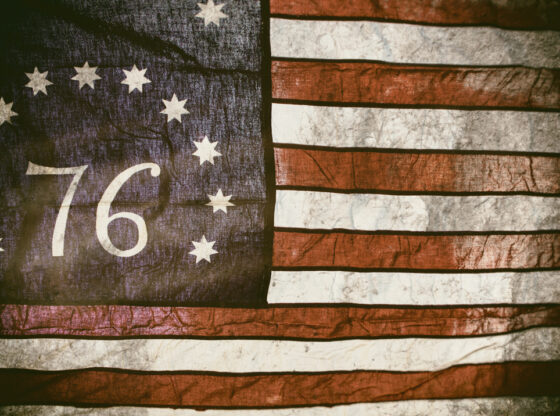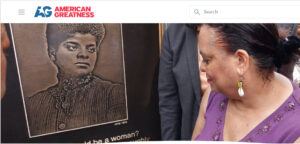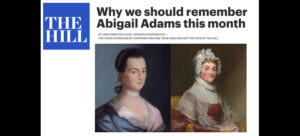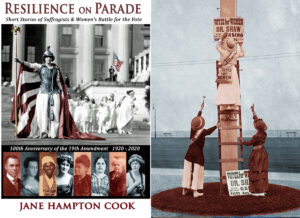Read the article as published on American Greatness.
On this Independence Day, many Americans are battling the neo-Marxist ideology of critical race theory (CRT) that is infiltrating schools, churches, universities, government, and the U.S. military. In contrast to the Declaration of Independence’s redemptive founding philosophy that all are created equal, the unredemptive CRT philosophy permanently divides people into oppressors versus the oppressed based solely on their skin color, regardless of their character, actions or beliefs.
One way to celebrate independence this July 4 and to counter this dangerous, divisive ideology is to discover how the Declaration of Independence gave birth to our greatest civil rights movements.
The Continental Congress issued the Declaration of Independence on July 4, 1776: “We hold these truths to be self-evident, that all men are created equal, that they are endowed by their Creator with certain unalienable Rights, that among these are Life, Liberty and the pursuit of Happiness.”
Abigail Adams understood the egalitarian nature of this quest for independence: “The spirit that prevails among men of all degrees, all ages and sexes is the spirit of liberty. For this they are determined to risk all their property and their lives nor shrink unnerved before a tyrant’s face.”
How soon did the Declaration’s signature phrase inspire “men of all degrees” as Abigail described? Within six months on January 13, 1777, eight enslaved black men led by Prince Hall petitioned the Massachusetts House of Representatives for their freedom by citing the Declaration’s unalienable rights.
“The petition of a great number of blackes detained in a state of slavery in the bowels of a free and Christian country humbly shuwith [showeth] that your petitioners apprehend that thay have in common with all other men a natural and unaliable right to that freedom which the Grat [Great] parent of the unavese [Universe] hath bestowed equalley on all menkind,” they declared.

This 1777 petition expressed their astonishment that abolition “has never bin [been] consirdered.” They were correct. Although the first abolitionist pamphlet was published 77 years earlier in 1700, none of the colonies had abolished slavery. Now that the Declaration had replaced the colonies with states, they hoped for change.
Though Massachusetts did not end slavery in 1777, Vermont did in its 1777 state constitution. Six years later in 1783, a judge to declared that slavery was unconstitutional under the Massachusetts Constitution, which was written by John Adams.
His wife Abigail, who also opposed slavery, accurately predicted that if women did not have a voice in their government, they would foment their own rebellion. As the abolitionist movement gained steam in northern and western states in the 1840s, so did the women’s voting rights movement.
The first women’s rights conference modelled their 1848 Declaration of Sentiments after the Declaration of Independence and asserted that “that all men and women are created equal.”
After the Civil War, abolitionist and suffragist Susan B. Anthony continued to tap the Declaration’s powerful rhetorical logic and emotion.
“‘Governments derive their just powers from the consent of the governed.’ This is the fundamental principle of democracy,” Anthony proclaimed, borrowing another phrase from the Declaration.
“Women and colored men are loyal, liberty-loving citizens, and we cannot believe that sex or complexion should be any ground for civil or political degradation.”
She believed it was time to put the Declaration into practice for all Americans.
“We respectfully and earnestly pray that, in restoring the foundations of our nationality, all discriminations on account of sex or race may be removed; and that our government may be republican in fact as well as form; A government by the people, and the whole people, for the people and the whole people.”
The abolition and women’s suffrage movements came to fruition through the 13th, 14th, 15th, and 19th Amendments to the Constitution. These amendments abolished slavery, declared freed slaves to be U.S. citizens, protected voting rights for black men and eventually voting rights for all women.
Ida B. Wells-Barnett, a former slave, suffragist and anti-lynching activist, had a healthy perspective about the Declaration of Independence’s influence on civil rights.
“The flower of the 19th century civilization for the American people was the abolition of slavery and the enfranchisement of all manhood. Here at last was squaring of practice with precept, with true democracy, with the Declaration of Independence and with the Golden Rule.”
The Declaration’s influence on civil rights, however, was not over.
“But 100 years later, the life of the Negro is still sadly crippled by the manacles of segregation and the chains of discrimination,” Martin Luther King, Jr. declared in his 1963 “I Have a Dream” speech. King looked to the Declaration of Independence as he spoke to thousands on the National Mall in Washington D.C.
“When the architects of our republic wrote the magnificent words of the Constitution and the Declaration of Independence, they were signing a promissory note to which every American was to fall heir. This note was a promise that all men — yes, black men as well as white men — would be guaranteed the unalienable rights of life, liberty, and the pursuit of happiness,” King proclaimed.
Although he believed that America had defaulted on that promissory note for black Americans through Jim Crow laws, he didn’t believe that America was bankrupt from its founding promise. Because of King, Congress passed the Civil Rights Acts of the 1960s and tore down systemic racist laws.
As we celebrate America’s birth this July 4, let us remember these great civil rights movements that the Declaration of Independence birthed. If any movement or ideology, such as critical race theory, isn’t rooted in our Declaration’s founding philosophy that all are created equal, then it is not worth pursuing and could be a Trojan horse of tyranny.






